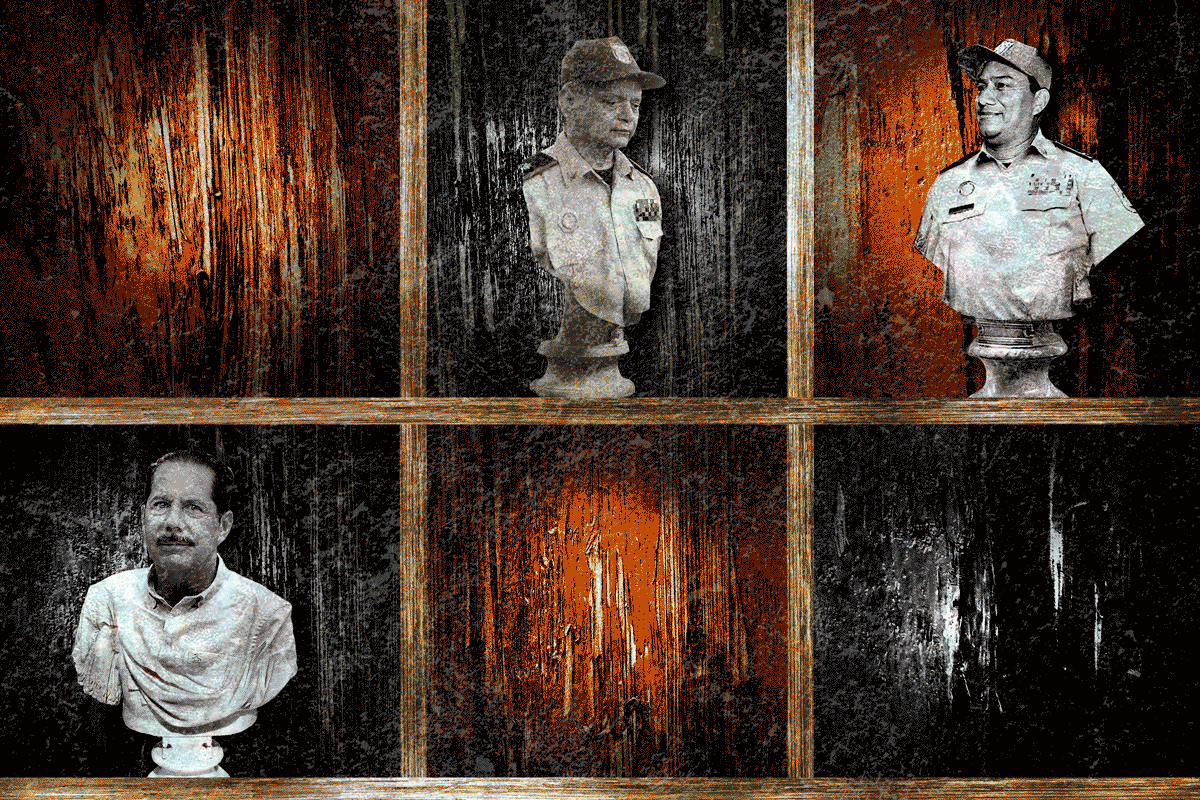Daniel Ortega is at the center of the table. Around him, strategically placed, are “The Ten,” a group of public officials whose loyalty “has been proven” to the “comandante” and Rosario Murillo, the vice president of the Sandinista government.
These men and women make up the new iron circle of the dictatorship. Some have had little time in the spotlight, while others have spent several years applauding and dancing for the dictators during the television broadcasts ordered by the regime.
Each of the officials invited to sit at the table with Ortega has played a key role for the Sandinista dictatorship, not only during the April 2018 rebellion but also in recent years when the regime has ensured to eliminate any hint of resistance in Nicaragua.
“The Ten make up the main cabinet. They are at that table because they have agreed to support Ortega and Murillo over their beliefs and coherence. Those who are no longer in the spotlight have fallen into disgrace or are only invited to specific events,” explained a source linked to the Sandinista government who anonymously spoke to DIVERGENTES.
Recibe nuestro boletín semanal
During the last public event attended by Daniel Ortega and Rosario Murillo on Wednesday, February 21, commemorating another anniversary of the death of Augusto C. Sandino, those present at the table with the dictators were: Julio César Avilés, head of the Nicaraguan Military; Francisco Díaz, general director of the National Police; Gustavo Porras, president of the National Assembly; Lumberto Campbell, magistrate of the Supreme Electoral Council; Loria Dixon, deputy and first secretary of the board of directors of the Parliament.
Also present were Bayardo Rodríguez, chief of the General Staff of the Nicaraguan Military; Marvin Elías Corrales, general inspector of the military corps; Horacio Rocha, presidential security advisor; Zhucov Serrano, deputy director general of the National Police, and Luis Cañas, vice minister of the reactivated Ministry of the Interior.
“The main representatives of the armed forces are at that table. Having them by their side can be interpreted as ‘I have the weapons’ on the dictators’ part. Also seated were the heads of the Legislative and Electoral Powers. The only ones not around the Ortega-Murillo are the representatives of the Judiciary,” explained the source. “And they are not there because the dictators have not defined who the most loyal is,” they added.
For several months now, the Supreme Court of Justice has been intervened by the National Police, under the direction of Horacio Rocha and the supervision of Fidel Moreno, secretary general of the Managua Mayor’s office.
Both have been responsible for a thorough cleaning of judicial officials who were “not so loyal” to the Sandinista government and are awaiting orders to hand over this state branch coordination to whoever Daniel Ortega and Rosario Murillo designate.
Face to face: those who sit at the table with Ortega-Murillo
The most visible changes among the loyal repressors at the table
The circle, though seemingly solid, has undergone certain changes in recent years. The most notable is the replacement of two key police figures for Ortega: the general commissioner and deputy director of the Police, Ramón Avellán, and the (now retired) intelligence chief of the same institution, Adolfo Marenco.
“Instead of Ramón Avellán and Adolfo Marenco, now we have Zhucov Serrano Pérez and Horacio Rocha. These two changes say a lot about the fragility that existed at some point in the Police,” said a source linked to the National Police.
While it is known about Marenco that the dictators ordered his retirement due to alleged disobedience and involvement in acts of corruption, regarding Avellán, it is still unknown why he was suddenly removed from the spotlight. The last time he was seen on a platform alongside Ortega and the other officials was on July 19, 2022.
“One version suggests that Avellán was involved in businesses that were not reported to the presidential couple. This was a reason for sanction, and that’s why he was removed. The last known thing is that they were considering his retirement,” said the source.
Also present at that July 19 event were Brenda Rocha, president of the Supreme Electoral Council; Alba Luz Ramos, president of the Supreme Court of Justice, and Ana Julia Guido, attorney general of the Republic.
Regarding Rocha and Guido, the consulted sources agreed that although they are important within the Sandinista regime, they are only taken into account to sit at the same table at public events if it is convenient. For example, during the July 19 events or during national holidays. The same happens with Fidel Moreno, who is a reference in the Government’s repressive scheme but has not been summoned to the table lately.
“The pillars of Daniel Ortega and Rosario Murillo are ten, and you will always see them at the table at public events. But there are others who, although they do not capture the flashes and cameras, are important for the development of other areas of their dictatorship. All of them, however, are the cabinet that helps them to sustain themselves,” explained the source linked to the Sandinista government.

